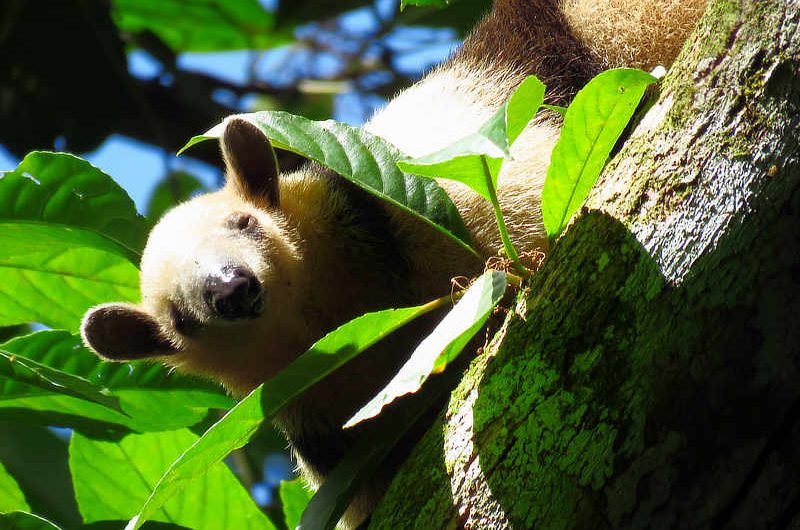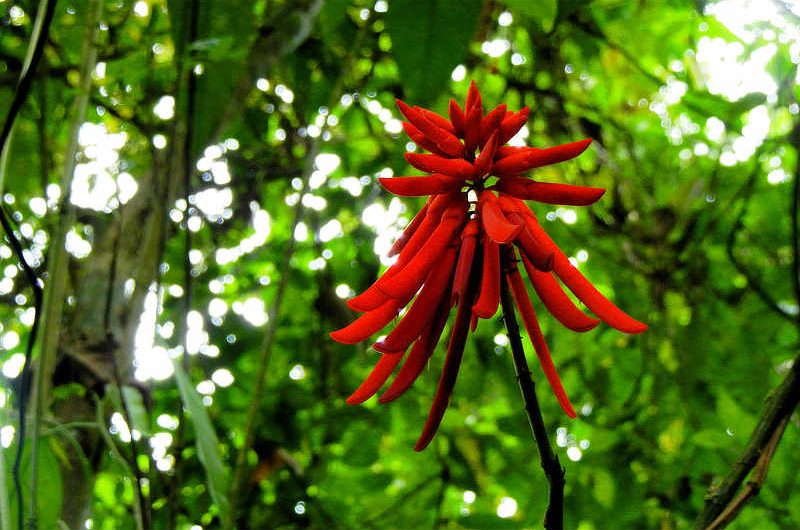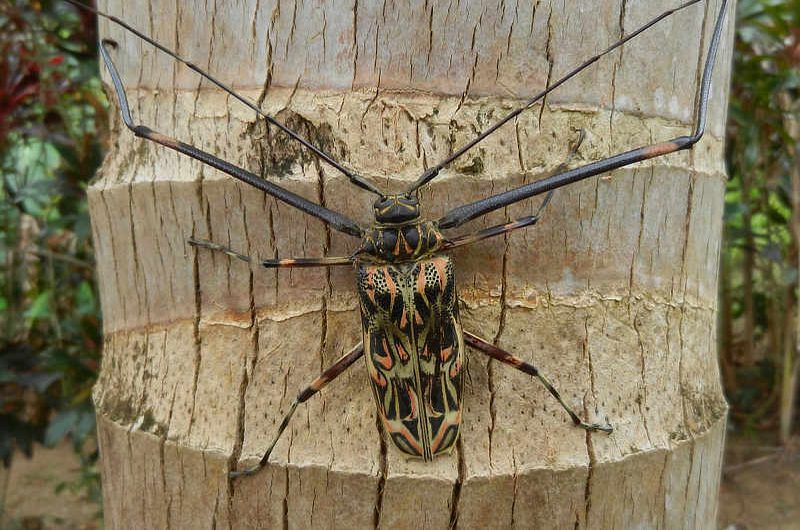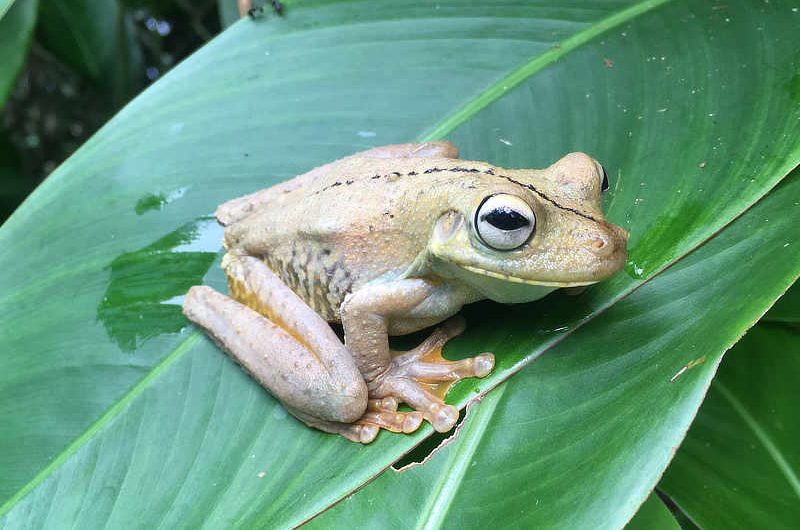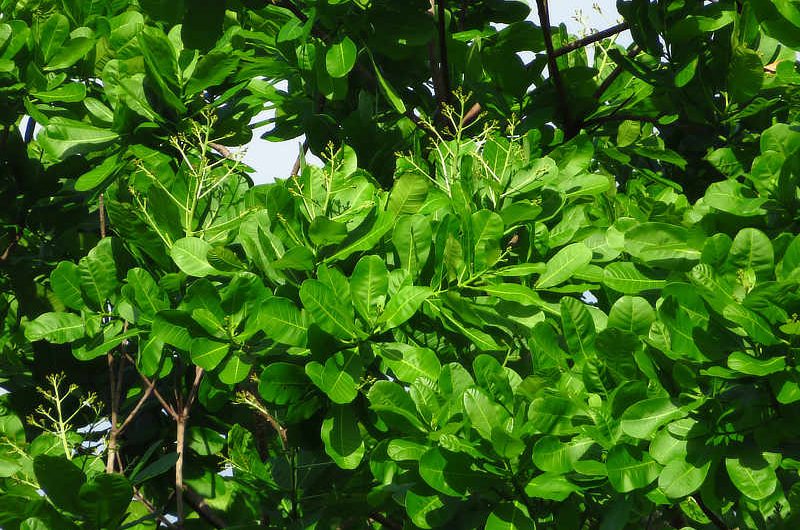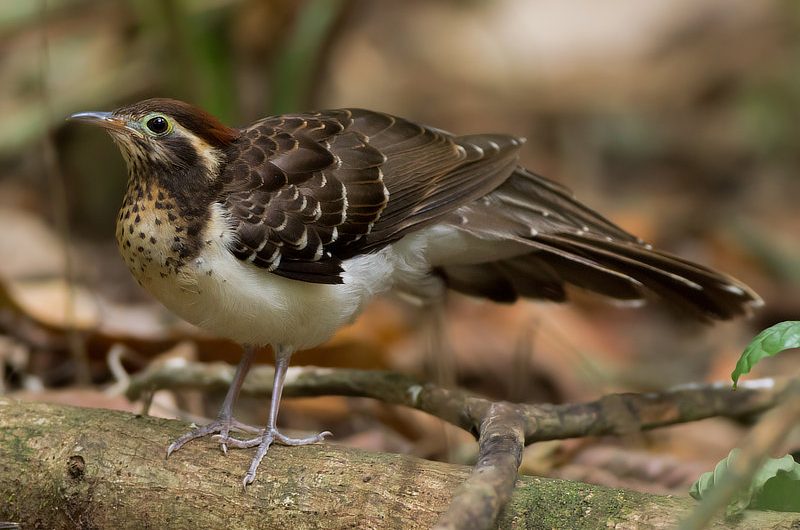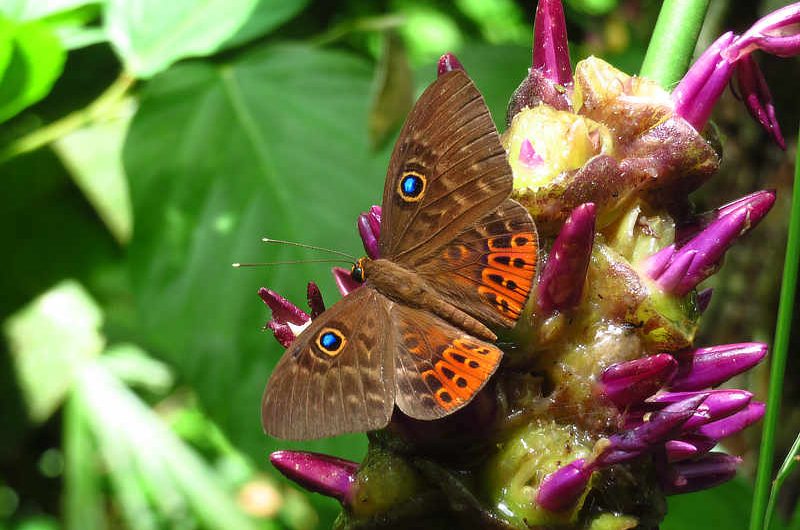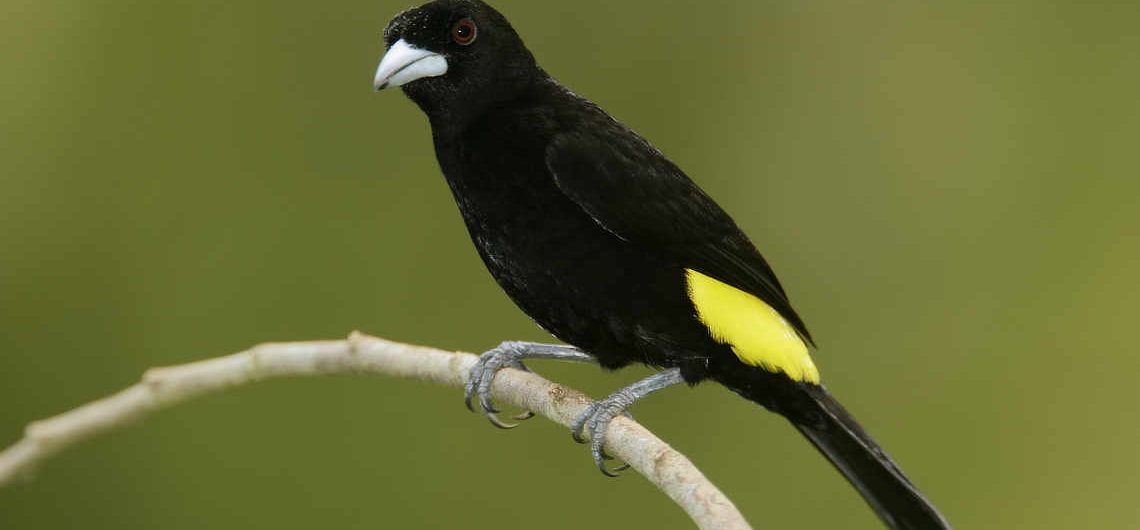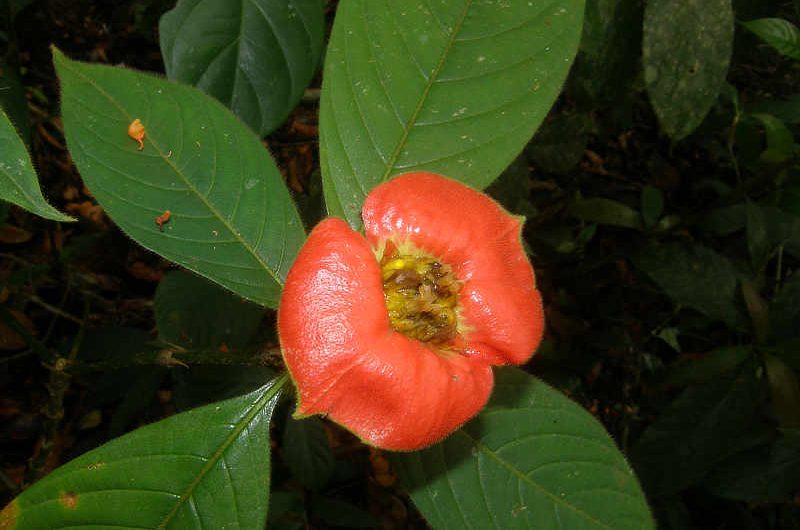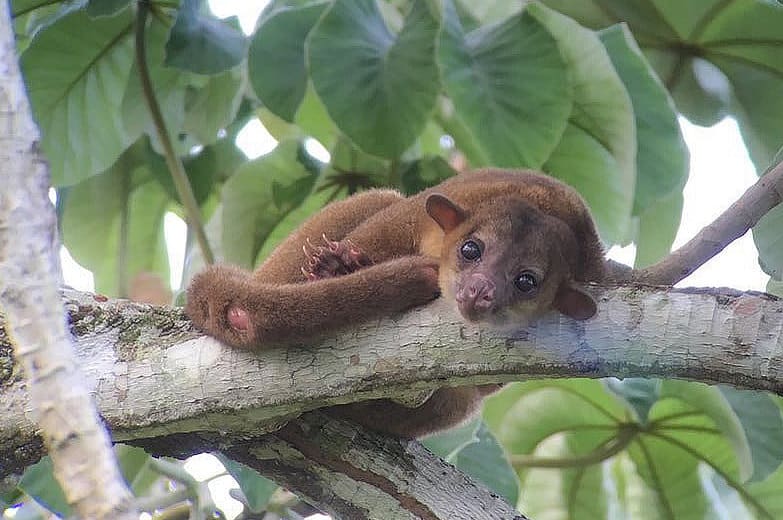Northern Tamandua Tamandua mexicana Photo by Jenn Sinasac The Northern Tamandua, also known as the Lesser Anteater or Vested Anteater, is a medium-sized anteater found in the tropical and subtropical forests of Central
Machete Erythrina costaricensis Photo by Jenn Sinasac Also known as Poro and Palo Santo, the Machete plant is a member of the pea family, Fabaceae. This shrub or small tree grows 3-7 meters
Harlequin Beetle Acrocinus longimanus Photo by Jenn Sinasac One of the largest and most beautiful beetles of the Neotropics, the Harlequin Beetle is named for the ornate, colorful red, olive & black pattern
Rosenberg’s Gladiator Tree Frog Boana rosenbergi Photo by Jenn Sinasac Rosenberg’s Gladiator Tree Frog is one of Panama’s largest amphibians, 70-90 mm in length! It gets its name “gladiator” from the sharp spikes
Wild Cashew Anacardium excelsum Photo by Jenn Sinasac A close relative to the commercial Cashew tree, the Wild Cashew, locally known as Espavé, is a huge, common tree in the lowland humid forests
Pheasant Cuckoo Dromococcyx phasianellus Photo by Rafael Lau The Pheasant Cuckoo is one of Tropical America’s most intriguing birds, with its long, full, tapering tail, small head, distinct call and odd behaviors. Widespread
Great Eurybia Eurybia patrona persona Photo by Jenn Sinasac Also known as the Great Sheenmark, this is a large, recognizable member of the metalmark family, Riodinidae. At 30-35 mm, it is the largest
Flame-rumped Tanager Ramphocelus flammigerus Photo by Arthur Morris A velvety-black tanager with a bright lemon-yellow rump, the male Flame-rumped Tanager stands out in a crowd! The female is less conspicuous, grayish-brown above with
Hot Lips Psychotria poeppigiana Hot Lips is one of the characteristic shrubs of the Neoptropics, and one which visitors are always delighted to see. It is a member of the family Rubiaceae (coffee family)
Kinkajou Potos flavos A Kinkajou resting during the day, photo by Domiciano Alveo The Kinkajou is a medium-sized arboreal mammal of the lowland forests of Central and South America. It is 40-60 cm in

